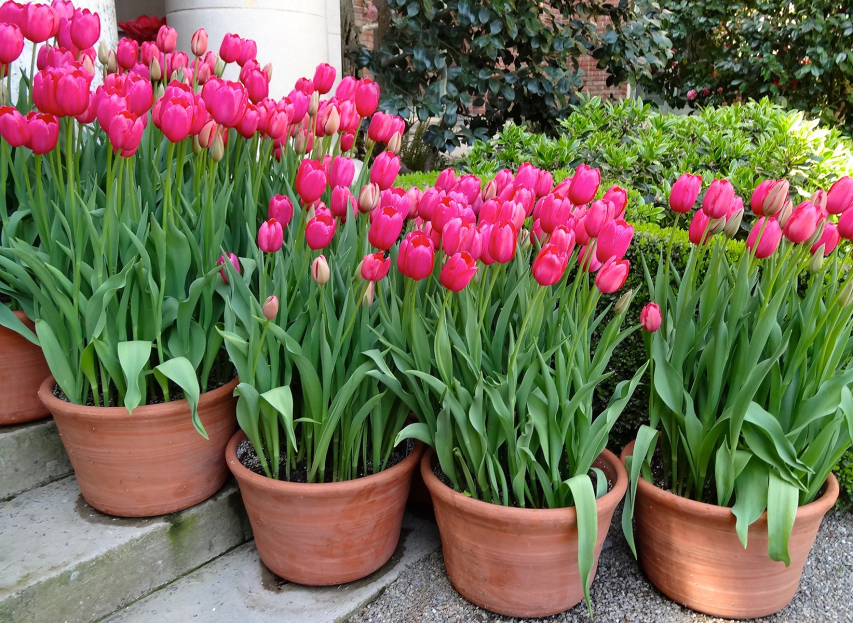
Tulips (Tulipa spp.) are iconic spring flowers known for their vibrant colors and elegant shape. While typically grown outdoors, tulips can also be successfully grown indoors as houseplants. With their cheerful blooms and simple care requirements, they bring a touch of spring into your home. Here’s how to care for your tulip houseplant to ensure it thrives and blooms beautifully.
Tulips need bright, indirect light to grow well indoors. Place your plant near a sunny window where it can receive several hours of light each day. However, avoid direct sunlight, as it can scorch the delicate petals and cause them to fade quickly. A location with morning sunlight and afternoon shade is ideal.
Tulips prefer moderate moisture and should not be overwatered. Water your plant when the top inch of soil feels dry to the touch.
Be sure to water thoroughly, allowing excess water to drain out of the pots drainage holes. Ensure the pot has good drainage to prevent water from accumulating at the bottom, as this can lead to root rot.
Avoid letting the plant sit in standing water. If watering into a pot without drainage holes , be sure to discard any excess water at the bottom of the pot after watering to prevent root rot and pests.
Tulips generally prefer average indoor humidity levels. They do not require particularly high humidity but can benefit from occasional misting if your home is very dry. However, avoid excessive moisture on the flowers and leaves, as this can cause them to wilt or develop mold.
Tulips grow best in well-draining, fertile soil. A standard potting mix combined with some perlite or sand for improved drainage is ideal. The soil should retain moisture but not become soggy. They also benefit from a slightly acidic to neutral pH level, so ensure your soil mix is suitable for this type of plant.
Tulips prefer cool to moderate temperatures. They thrive in temperatures between 50-60°F (10-16°C). If your home is warmer, you may want to keep the tulips in a cooler room, away from heat sources like radiators or heating vents. They will bloom best in a cool environment, so try to avoid placing them in overly warm or drafty areas.
Tulips do not require frequent fertilizing. You can feed your tulip plant with a balanced, water-soluble fertilizer once every 4-6 weeks during the growing season. A fertilizer with a higher phosphorus content will help promote blooming. After they have finished blooming, stop fertilizing and allow the plant to rest.
Once the tulips have finished blooming, you can remove the spent flowers to prevent the plant from putting energy into seed production. Leave the leaves intact until they begin to naturally yellow and die back, as they help the bulb store energy for future blooms. Avoid cutting back the foliage too early, as this can hinder the bulb’s ability to store nutrients.
Tulips are typically grown from bulbs and do not need frequent repotting. If you are forcing tulips to bloom indoors, you can repot the bulbs into fresh soil after blooming. They are often grown as annuals indoors, so you may choose to discard the bulbs after blooming and plant new ones the following season. If you decide to keep the bulbs, allow them to rest in a cool, dry place for several months before replanting them in fresh soil.
Tulips are toxic to pets, especially to cats and dogs. The bulbs contain compounds that can cause symptoms such as vomiting, diarrhea, and drooling if ingested. It is essential to keep tulips out of reach of pets to prevent any potential health issues.